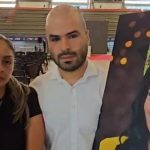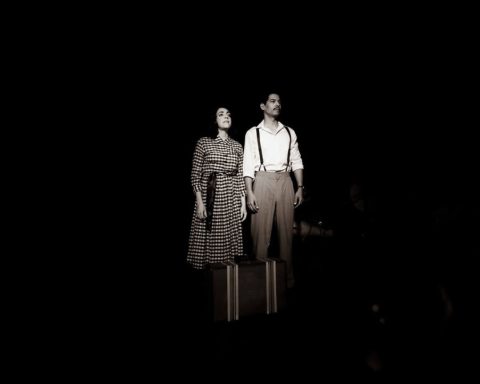The payment capacity of borrowers has worsened, especially for families and micro-enterprises, despite the economic recovery and the increase in employment. The assessment is by the Central Bank (BC), in its Financial Stability Report for the first half of 2022, released today (3).
In the document, the entity warns that the scenario is still of family income “increasingly committed to more onerous debts, such as credit card and non-consigned credit”.
“Risk materialization increased due to riskier concessions in previous quarters. In microenterprises, problem assets increased despite strong portfolio growth [de concessões de crédito]. In relation to families, risk materialization grew significantly in 2022 in non-consigned credit, credit card and vehicle financing”, says the publication.
According to the BC, the estimate of the quality of hiring for micro-enterprises throughout the first half of the year was at a lower level than in previous periods. For individuals, non-consigned credit continues to grow more in higher risk operations, without collateral or with a personal guarantee. With regard to vehicles, financing for used vehicles still predominates, with longer terms.
“In this sense, there is growing concern about the effect of possible frustration of economic activity on the materialization of credit risk. Faced with this situation, Comef [Comitê de Estabilidade Financeira] has repeatedly assessed that it is important for financial institutions to continue preserving the quality of concessions”, he says.
Even in this scenario, the BC analyzes indicate that there is no relevant risk to financial stability and that losses are being controlled. “In line with the context, the provisions [reserva monetária sobre riscos de crédito] increased, and its level remains above expected losses. The greater constitution of provisions kept the level of provisioning at a comfortable level to support the expected losses with credit”, he explained.
Profitability
Despite higher expenses with provisions, the profitability of the banking system remained stable in the last semester. The system’s net income was R$138 billion in the twelve-month period up to June 2022, 5% higher than that recorded in 2021 and 20% higher than that observed in the twelve months up to June 2021.
“In line with the highs of the Selic [taxa básica de juros], the increase in the treasury margin has offset the reduction in the credit margin. On the one hand, the increase in the Selic increased the cost of funding, reducing the credit margin; on the other hand, it raised the margin with treasury. In the non-interest portion of results, service rents grew at a slower pace in the first half of 2022, but banks have been able to keep costs under control even in a context of high inflation,” the report says.
According to the document, the system’s profitability should remain resilient, but the economic scenario marked by restrictive financial conditions and high inflation demands attention from institutions.
The BC also reinforced that the banking system remains with comfortable liquidity to maintain financial stability and the regular functioning of the system, with the capacity to absorb potential losses in stressed scenarios and comply with regulations.
“The capital base is solid. Capitalization remains comfortably above regulatory minimums. The regulatory capital margin makes it possible to expand the supply of credit in a sustainable way”, added the BC.
Bank credit for individuals maintained the high pace of growth, especially in non-consigned credit and credit cards. According to the BC, credit to micro, small and medium-sized companies also continued to grow strongly, especially to finance working capital in micro-companies and investment in medium-sized companies.
Larger companies, on the other hand, continued accessing mainly the capital market, but began to increase operations with the banking system again. “Such growth is consistent with the pace of GDP growth [Produto Interno Bruto] nominal”, says the BC.
stress tests
The results of several risk analyzes and stress tests continue to demonstrate the resilience of the capital base and the banking system in the first half of the year.
In the stress test, the BC simulates how much a situation of severe default and bank runs impact the compliance with minimum regulatory limits by financial institutions and how much the monetary authority would need to contribute to the financial system.
Among these limits is the maintenance of a cash reserve to ensure that banks pay all customers who withdraw money in times of crisis. Credit, interest, foreign exchange and property devaluation risks are also tested.
The BC considered two scenarios: the first, of a fall in economic activity and household consumption, increase in unemployment, fall in inflation and interest rates; and the second, of an increase in uncertainty in the economy, with fiscal deterioration, high exchange rates, rising interest rates and pressure from inflation.
“Even in simulations with more adverse macroeconomic scenarios, there would be no relevant non-compliance. Tests carried out by the largest financial institutions confirm resilience. Sensitivity analyzes also indicate good resistance to risk factors, simulated in isolation,” says the report. “The liquidity stress test indicates a comfortable amount of liquid assets in the event of cash outflows in adverse conditions or shock to market parameters”, he adds.
climate risks
In this report, the BC also evaluated the risks of the credit portfolio of sectors that are more exposed to possible regulatory, technological or behavioral changes in a process of transition to a low carbon economy.
Regarding climate risk, 8% of the National Financial System’s loan portfolio is sensitive to the risk of this transition. According to the report, this percentage has changed little over time and is concentrated in smaller financial institutions. The Beef Cattle, Cargo Transport and Soybean segments account for more than 70% of exposure to transition risk.
“Simulation indicates that the portion of credit located in municipalities with greater risk of drought would increase. Currently, 16% of the credit stock is with borrowers who make intensive use of water, located in municipalities with medium or high risk of drought. This percentage increases to 19%, considering the drought scenario projected for 2030 and 2050”, explained the BC.
The Southeast region, which concentrates about half of the Brazilian GDP, would be more exposed to the risk of drought, both due to the large volume of credit and the number of municipalities vulnerable to extreme drought in the projected horizons. Rural credit for individuals and credit to the energy sector account for almost half of the exposures considered to be medium and high risk.

















